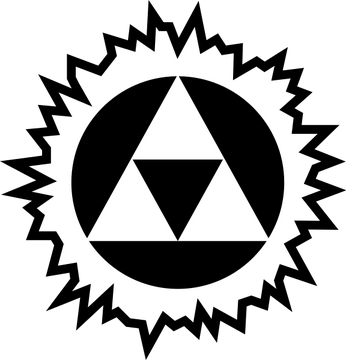Short overview of how good the nesting capabilities of various 3D slicer are.
The task is simple: placing as many of these shapes on a 200x300mm printed as possible. Manual (quick and dirty for reference): 6 pcs.

Ranking:
- Ultimaker Cura: 7 pcs.
- human (me): 6 pcs.
- Orca slicer: 5 pcs.
- PrusaSlicer & BCN3D stratos: 4 pcs. By switching (for this particular part) from the worst (Prusa) to the best (Cura) slicer the nesting performance improved by a whopping 75%!
Ultimaker Cura:

Prusa:

BCN3D Stratos (forked from an old version of Cura):

OrcaSlicer:

Did you turn on Automatic Rotations in Prusaslicer? By default it’s left off and just tiles your part when you duplicate it.
Default settings. Where is the option to rotate it?
Providing it manually with 90° rotated and using the auto arrange instead of fill bed: 5 pcs. Still not a great result.

Right click on the auto- arrange icon. I think the checkbox is in there.
Yeah, it’s still not great.
Thanks. See the other comment for details how now performs.
There’s also a setting for minimum spacing between parts. The default is overly cautious iirc, I’d suggest lowering it and trying again, though I don’t expect it to change much
Improved but still not a match to Ultimaker Cura.
Prusa is very slow compared to Cura as PrusaSlicer needs every option checked including Geometry handling accurate to sometimes get 7 pcs. matching Cura performance. If the result is 7 or 6 pcs. depends on where the part originally was placed on the print bed (or luck? run to run variance?). Not a reliable software for nesting.
With fast and balanced setting it only does 6 pcs.
fast:

balanced:

accurate:



Keep in mind that if you slice multiple parts to be printed at a time, then a failure on one part means the whole batch is potentially compromised.
I have the most experience with PrusaSlicer, and have used the multiple part one at a time option to print multiple parts at once. You have to tell it the dimensions of your extruded head, so it doesn’t crash the part , and if you have a bed slinger, you have to be careful of your x axis bar (ie, order it so it starts at the front if the bed and works it way to the back)
With mainsail and klipper, you can cancel one failed part mid print and keep going on the rest of the parts.
With mainsail and klipper, you can cancel one failed part mid print and keep going on the rest of the parts.
Woah woah woah, I’m gonna need you to tell me what that’s called because that’s brilliant
https://help.prusa3d.com/article/sequential-printing_124589 <-- explains how to set up the sequential printing in Prusa.
https://www.klipper3d.org/Exclude_Object.html <-- Explains the exclude object function in Klipper/Mainsail
https://docs.mainsail.xyz/overview/slicer/prusaslicer#enable-exclude-object <-- how to configure Prusa to label objects so mainsail/klipper can individually select and skip them.
Like I mentioned, I have the most experience with Prusa + my Ender3 ( w/ a RPi3/Kilpper & mainsail; and a crtouch sensor) . I’d wager that other slicers could do this too, but I"m not sure of their setup.
Thank you so much for this! I installed Klipper a month or two ago and haven’t had the opportunity to dig into all of the cool stuff you can do.
You can also cancel individual objects on Prusa MK4 and Mini by default.
You can do that on the Prusa. The firmware let you cancel a part mid print but continue the rest.
With mainsail and klipper, you can cancel one failed part mid-print and keep going on the rest of the parts.
There is an addon for Duet (RRF) but I can’t get it working. Anyway, once it is time for a batch print the first testprint has been completed successfully and build plate adhesion is a non-issue on this printer.
You have to tell it the dimensions of your extruded head, so it doesn’t crash the part Ask me how I destroyed two z-endstops this year (very asymmetrical toolhead and Prusa can’t be configured to reflect this and with a “radius” large enough it would block half of the printbed (60mm radius or so) meaning eyeballing is the best option).
I only use this option if I need the part before the entire batch is finished and don’t want to start multiple prints. Which isn’t frequent.
I think it’s not widely front-and-center because it’s kinda fiddly, especially with folks with customized printers and there are caveats that can damage the machine or ruin the print if you are not careful. Sadly, I think that some of the more ‘closed’ slicer/printer systems could support it more reliably because the dimensions of the head + arm are much better known and the tool path can be planned much more precisely.


